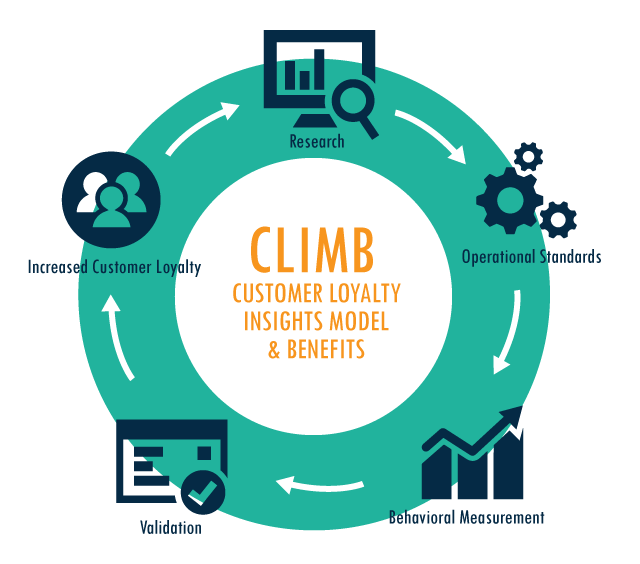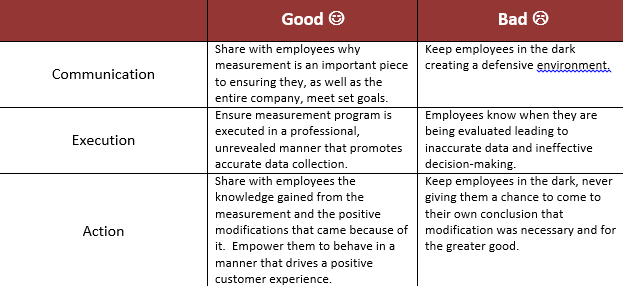Alright! We've done our initial customer research and understand what customers are looking for, and what competitors are offering in comparison. We’ve also taken a look at operational standards, to ensure internal practices are in support of delivering what customers want. This likely included making some changes regarding what is expected of employees, in order to support a superb customer experience.
This leads us to the next phase in the CLIMB model, Behavioral Measurement. What is behavioral measurement, you ask? It is the ongoing on-site measurement of behavioral standards. Behavioral measurement is the process of evaluating what is actually occurring when employees are interacting with customers and measuring it against the operational standards.
What’s Really Happening?
It is not enough to simply implement operational standards and hope for the best. It is imperative to understand the impact of those standards, in particular as it relates to employee behavior – most importantly, how their behaviors affect the customer experience. Behavioral measurement can be broken down into two components.
1. In-Store Experience Evaluation: Mystery Shopping
- Measure against operational standards
- Determine if employees are exhibiting the right behaviors
- Determine how those behaviors affect customer satisfaction
2. Modification
- Take action based on the results of the customer experience evaluation data
- Management reviews the results and recommends one or all of the following:
-Coaching
-Retraining
-Rewarding for behaviors that drive a positive customer experience
Recipe for Success or Disaster?
Okay, to be honest, this phase of the CLIMB model sometimes gets a bad rap. There are a few common pitfalls that can derail the process.
We find that the most successful examples of Behavioral Measurement occur when companies take a transparent approach to their monitoring. Sharing the “why” behind measurement, as well as the ultimate goals, help employees understand the big picture. Results can then be communicated in a non-threatening way.
Common Market Research Methodologies
Examples of ways that TrendSource supports this step in CLIMB are below.
- Compliance Audits
- In-Store Customer Experience Mystery Shops
- Call Center Mystery Shops
- Employee Incentive Programs: Rewards and Recognition
What’s Next?
Once you know what is actually happening at your locations and you have made changes where necessary, it’s time to answer the all-important question, “Is it working?” Stay tuned for the Validation installment of the CLIMB model!
Want to talk more about CLIMB? Continue the conversation on Twitter with #LearningtoCLIMB


